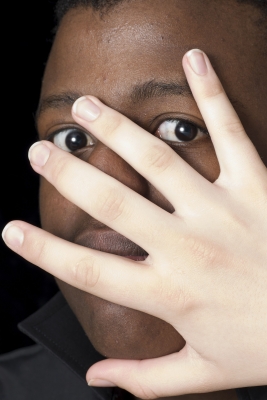When I was growing up, the kids in the playground used to tease me. ‘Ching chong chinaman,’ they would sing. ‘Are you eating lice today? Do you have worms for lunch? How can you see out of those slanty eyes?’ With my Indian friend they were just as inventive. ‘You stink of curry!’ they would shriek, holding their hands over their noses.
Kids are clever, as well as cruel. You see a lot of this sort of thing in the playground. It might be called racism, but for the most part I think it’s a general fear of difference, borne of a blossoming sense of identity, ignorance about the world and external inputs like family attitudes. Often, it’s something kids outgrow. They leave it behind as they age, change, as they see more and learn more, as they open their minds to possibilities and differences and education.

But some don’t, and those children become adults who carry their philosophy well beyond the confines of the playground into the workplace and society. For the most part, it’s surprising to come across genuine and open race-based hostility; it’s unpleasant and thankfully not too common.
When does racism become a crime?
Drawing the line between tamping down on racism and defending the right to free speech is a tricky one. Racism is actually a way of thinking; a judgement or beliefs based on racial stereotypes. In a free society it is no crime to hold an opinion, however much it differs from mainstream thought. It is when that thought becomes the basis for an action that it becomes a problem.
Even then, not all racist events are criminal offences, and not all crimes with a race component can be prosecuted as racially-motivated crimes. The United Kingdom has a detailed code to determine what can and can’t be prosecuted as a racially-aggravated offence. The basic standard is that the court must prove that one of a certain set of offences has occurred and then prove that it was racially aggravated. These offences include assault, actual bodily harm, intentional harassment, damage, stalking and an incitement to violence. Sentencing in the UK becomes more severe when the charges are made as specifically racially aggravated crimes.
Hate crimes in the US
The US has hate crime laws designed to protect its citizens from crimes motivated by racism. The 1964 Federal Civil Rights law protects victims from race-based harassment or injury when they partake in federally-approved activities, but the 2009 Matthew Shephard Act removed the prerequisite that they be engaged in a federally protected activity. All but five states have statutes that criminalise bias-motivated intimidation or violence.
Some feel that racially motivated crimes should not carry a more severe penalty than those committed without racial aggravation because it involves punishing people for their thoughts. Critics feel that by defining a crime as being committed by a group against another group, it exacerbates conflict in society.
The alternative view is that not defining a hate crime as such also exacerbates conflict; retaliatory crimes are just as likely, community unrest is incited and since the crime is against the very identity of the victim he or she is likely to be emotionally scarred. This ‘greater individual and societal harm’, as Chief Justice William Rehnquist described it, is justification for the harsher punishments.
The prevalence of hate crime over the past few years has somewhat stabilised and make up a small percentage of the overall crime rate, according to the FBI’s statistics on bias-motivated crimes. Yet the necessity to legislate against it is itself a concern, and indicates a worrying prevalence of children unable to leave the playground in their childhood.
Citations:
- This photo is from FreeDigitalPhotos (ID: 10078875)
The author of this article, Kahmen Lee, is a freelance writer who grew up in Australia and now spends her time living between the UK and the US. She occasionally writes for a Westlake Village personal injury lawyer and has written extensively on the search for identity and the sociological impact of racism.

